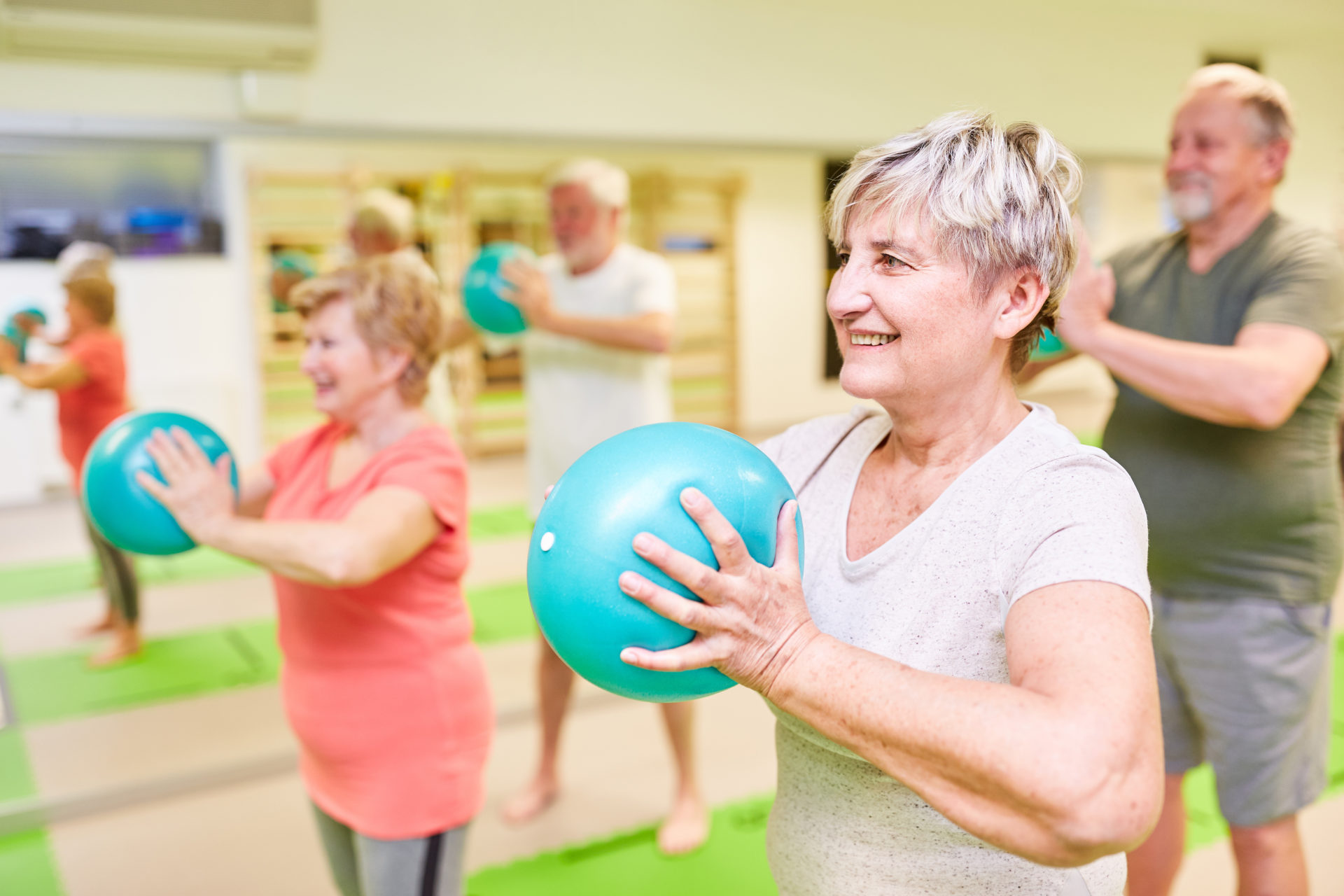Exercise has neuro-protective and restorative properties which have been shown to slow progression of the Parkinson’s Disease.
 Feel better, move better and sleep better. For people with Parkinson’s, any physical activity will contribute toward better health — even just a few minutes! Research clearly shows that regular exercise can reduce the severity of Parkinson’s Disease (PD) symptoms and slow down the progression of the signs of the disease.
Feel better, move better and sleep better. For people with Parkinson’s, any physical activity will contribute toward better health — even just a few minutes! Research clearly shows that regular exercise can reduce the severity of Parkinson’s Disease (PD) symptoms and slow down the progression of the signs of the disease.
How can exercise help someone with Parkinson’s Disease?
Exercise has been shown to have significant benefits to people with PD. While there is a large focus on the physical symptoms associated with PD; equally challenging is the impact on sleep, fatigue, mental health, confidence, and independence, all of which the right exercise can help with!
Exercise is particularly important to maintain functional strength, reduce the risk of falls with balance training, develop walking patterns to assist with freezing symptoms as well as improving coordination and agility. Exercise also has neuro-protective and restorative properties which have been shown in research to slow progression of the disease itself. On top of all these clinical benefits, exercise makes you feel good! It can improve your mood, increase social engagement, and improve overall quality of life.
Create an exercise plan that is specific to you and your goals.
When should I start exercise for PD?

The answer is simple – the sooner the better! Due to the progressive nature of Parkinson’s Disease, it’s recommended to start including exercise in your treatment following diagnosis and create a plan that is specific to you and your goals. Many people wait until the physical symptoms start to impact them before seeking help. However, early integration of exercise into your treatment can assist with slowing the rate of decline.
Which type of exercise is best for PD?
The most beneficial exercise program is one that is highly individualised and prescribed by a health professional. An Accredited Exercise Physiologist is an expert in prescribing exercise and medicine and will be able to prescribe an exercise program specifically tailored to your symptoms and goals. Particularly as the condition and symptoms progress, there are a number of specific tips and cautions and having supervision during exercise is recommend.
Aerobic activity Rhythmic, continuous aerobic activity 3-4 times/week. Build up to accumulate 150 minutes of moderate intensity activity, starting with small bouts of 5-10 minutes. For mild-moderate PD exercise at a moderate-hard intensity, for advanced PD exercise at a light intensity.
Strength 2-3 days/week with a rest day between. Start with easy effort and gradually progress, completing 8-12 repetitions for each major muscle group, starting with 1 set and building up to 3 sets.
Flexibility 2-3 days/week or daily where possible. Gentle Range of Motion (ROM) of joints moving in large, exaggerated motions or stretch to the point of tension and hold; you should not feel pain. Hold static stretches for 10-30 seconds and repeat 2-4 times. Complete 10 repetitions of active ROM exercises focusing on your affected joints.
Balance & Coordination 30 minutes, 2-3 days/week. These exercises need to be specifically tailored to your individual capacity. An Exercise Physiologist can guide you safely through balance and coordination training, using special techniques for different stages of PD.
Tips for exercising with Parkinson’s Disease
- Often people with PD have a time of day when their symptoms are less prominent. Although it can change from day to day, aim to exercise at the time that you are at your best.
- Choose activities you enjoy! If you don’t enjoy it, it’s unlikely you’ll stick with it, so find an environment, activity or exercise partner that will keep you motivated as much as possible.
- Make sure the exercise is safe and adapted to the challenges that your PD symptoms present at the time. What may have been manageable one day, might be too much the next, so be prepared with different options or seek professional guidance.
- If you are sad or anxious, consider a mind-body activity such as yoga or a walk outside to help reduce anxiety, depression and improve how you’re feeling about life.
- Focus on the specific movmements invovled in each exercise in that moment — don’t cut corners or jump ahead to the next step. Where possible, cut out all distractions to increase your focus on the exercises.

Not sure where to start?
If you, or someone you love has been diagnosed with Parkinson’s Disease, encourage them to see an Accredited Exercise Physiologist and learn how to exercise right for their condition.
Find out more about Bodytrack’s PD Empowerment group program.
